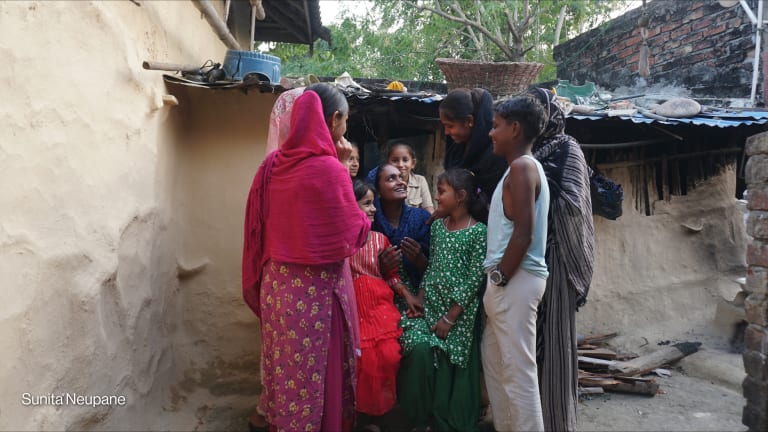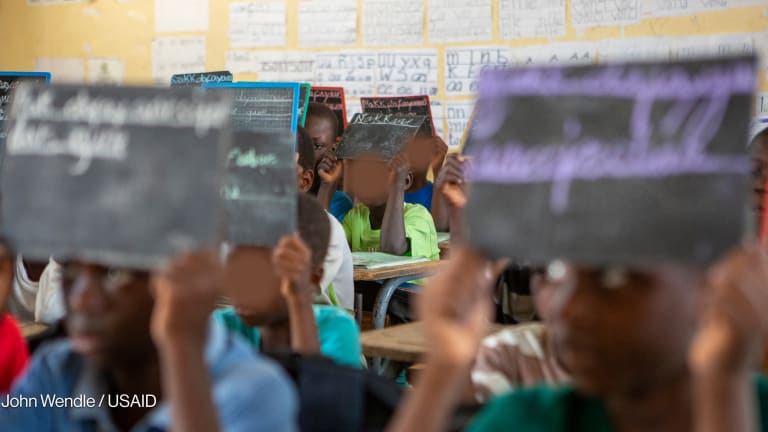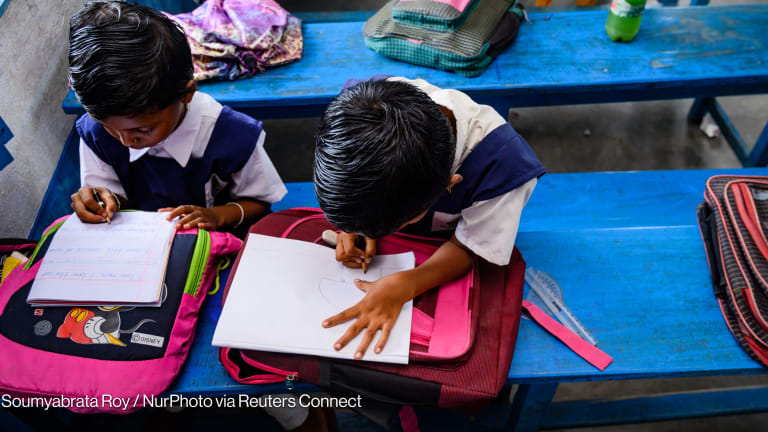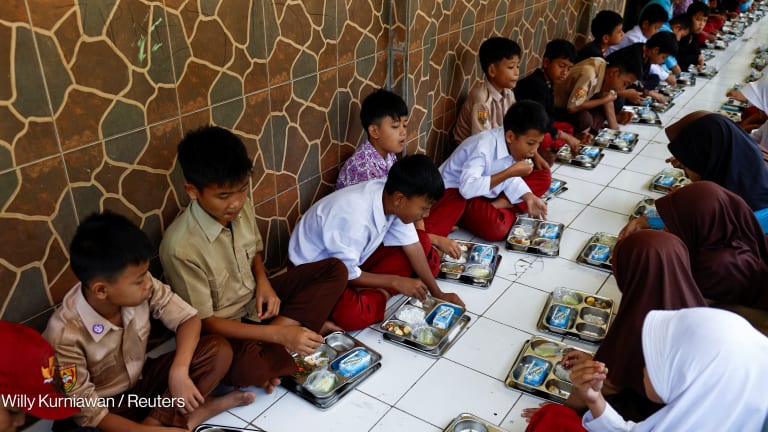
LONDON — With new data revealing that more than 620 million children will have their educations interrupted by a range of threats over the next decade, veteran education campaigner Sarah Brown is calling on donors and actors to do more on school safety.
By 2030, nearly 1 in every 3 children could be living in places where their education is under threat due to conflict, gang violence, environmental disasters, as well as corporal punishment, sexual and gender-based violence, and bullying, according to recent estimates from education campaign group Theirworld.
“If you’re losing teachers because they don’t feel safe ... or they are undermined or overstretched, then you’re not going to get the best learning.”
— Sarah Brown, president, TheirworldThese numbers mark an increase from earlier projections and could result in nearly a quarter of these children not finishing primary school and three quarters leaving school without basic literacy and numeracy skills, Theirworld predicts. But pupils are not the only ones at risk — 16.5 million teachers will also be under threat by violence and humanitarian emergencies, the report states.
However, school safety is currently “underfunded and overlooked,” according to Brown, who founded Theirworld in 2002, which runs global education campaigns and pilots innovative grassroots approaches.
The charity pioneered a double-shift schools program in Lebanon that enabled thousands of Syrian refugees to attend school by having their lessons after those of local children. Theirworld also raised more than $30 million to help protect students and rebuild schools in northeast Nigeria after the 2014 kidnapping of nearly 300 girls from their school in Chibok. It was also a lead campaigner for the creation of Education Cannot Wait, launched in 2016, to ensure children in humanitarian settings get an education.
Devex spoke to Brown, who is married to the former British Prime Minister and now U.N. Special Envoy for Global Education Gordon Brown, about the importance of safe schools.
This conversation has been edited for length and clarity.
Why is safe schools such an important issue and does the report contain any unexpected findings?
The report shows the gravity of the situation and that if you don’t put a focus on education in areas of high violence or those affected by conflict or humanitarian crises, then you don’t get to reach Sustainable Development Goal on education. It’s a massive problem that no one is addressing, it’s underfunded and overlooked.
More on education:
► Meet the new global education donor: BHP Billiton
► UNGA 2018: All the education news
► Is the global education sector heading toward fragmentation?
The report looks at the full range of threats facing students and teachers — and these threats are growing. You’ve got the impact of war and environmental threats and you’ve also got growing levels of gang and other societal violence ... affecting [what goes on] inside schools.
This is particularly [prevalent] in Latin America, and the report shows that only Syria has a higher rate of violent deaths each year than Honduras and El Salvador. These are countries where intimidation and assault of teachers and students in and around schools is used as a weapon of gang violence and this obviously has a massive impact on their education … and stops children learning.
Why has the issue been overlooked for so long?
If you go back five, six, seven years ago, there was no mechanism for funding education in a humanitarian setting. The education funding was all in international development. Also, because humanitarian crises were meant to be short-lived so the priority is health, medical care, nutrition, and shelter.
Education was not only at the back of the queue, but it wouldn’t be done in the midst of the crisis. But now, refugees are refugees for years, and we also know better that being able to engage back into a learning environment can help children alleviate some of the psychological trauma of what’s happening to them. So education has now gone back up the list but there was still no funding, nothing existed in the system.
There's so much talk now about the learning crisis and the need to focus less on access and more about the quality of learning going on in schools. Does this make it harder to get support for work on safe schools?
It’s really simple, safe schools is all about learning and if your focus is learning then safety mustn’t be overlooked. By 2030, nearly 2 in every 5 children will potentially be living in places where their education is under threat. But that’s also 16.5 million teachers … and if you’re losing teachers because they don’t feel safe in that environment, or they are undermined or overstretched, then you’re not going to get the best learning. Learning really does suffer in places where schools and learning spaces aren’t safe.
What is in the “framework for action” Theirworld puts forward?
You’ve got a lot of different stakeholders who need to meet this challenge — donors, NGOs, financial institutions, local communities, governments, businesses. Everyone has a part to play and that partnership is what creates a difference. It’s not about saying there’s a new action you need to take independently.
There are a whole well-known set of actions around creating physical safety for children and teachers, and that’s in the report … but also we’ve looked at how NGOs and academia can pilot programs and share results because that is where we are noticing where the difference gets made.
For example, the difference we [Theirworld] made through the double-shifts schools proposal ... it’s taking something at a small level, funding a way to test it, sharing results, bringing in somebody who really knows how to do the metrics so you can actually prove the case.
What role should the various existing and emerging education financing mechanisms and donors play?
We feel very strongly that safe schools needs to go into the heart of what donors are doing and not become a separate activity. So we’d like to get safe schools embedded very early on in the different financing mechanisms that exist, whether it’s the new International Finance Facility for Education, the Global Partnership for Education, ECW, or bilateral support and the multilateral development banks, so that they are using these emerging ideas [around safe schools] — the people, the technology.
There isn’t a one-size-fits-all solution, which is no surprise, but there is a way to keep a perspective on all the issues around safety and make sure that everyone working on the delivery or financing of education can build that in.
What does 2019 hold for global education?
Despite the fact that the world is still very precarious and the level of conflict is high, I think education is building in a really positive way. GPE has a had a pretty good replenishment and … they have that absolute privilege of being able to go for the kids who are the most vulnerable.
ECW is on a roll really and then IFFEd, which a few years ago looked like something you weren’t sure would happen … absolutely is happening … I feel quite positive about it, I don’t think any of it will be easy and the detail really matters, but we will keep our call around safe schools because we are convinced it matters.








